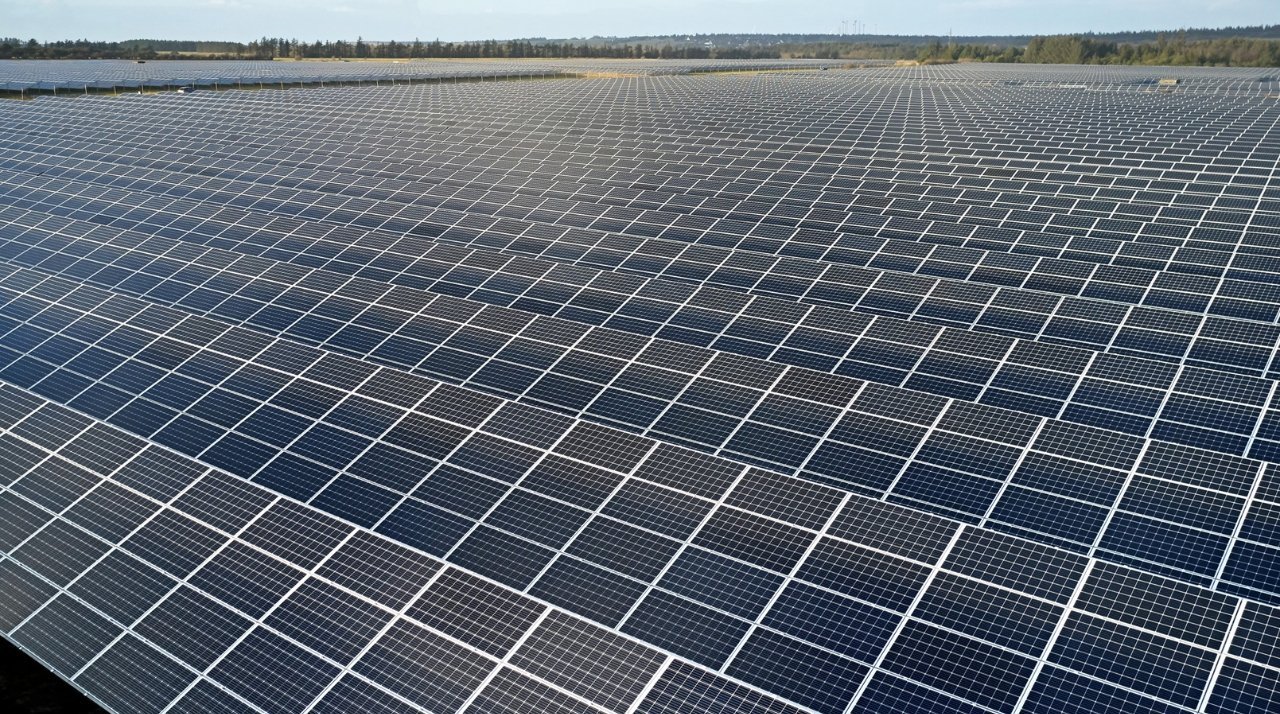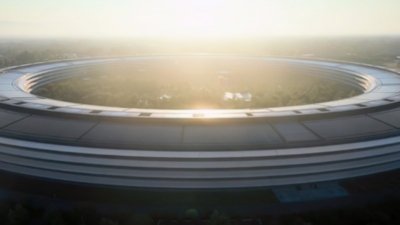Apple is continuing to step up its environmental efforts, revealing new projects to increase the use of clean energy, as well as to replenish fresh water it uses by 2030 ahead of Earth Day.
Apple made a pledge in 2020 to become completely carbon neutral by 2030, covering everything from its supply chain to power consumed to recharge its products. In an update on April 17, it seems Apple is well on its way to achieving the goal.
The update, published on Wednesday morning, includes claims that Apple and its suppliers now use more than 18 gigawatts of clean energy. This is up from the 13.7 gigawatts used by the supply chain as reported in 20203, and is triple the clean energy usage of 2020.
Apple is making more solar power investments in the U.S. and Europe, which it says is to help clean the energy used by device recharging.
Apple has also made progress towards another goal, replenishing 100 percent of fresh water used by its corporate operations in high-stress locations.
The progress has included creating partnerships to deliver almost 7 billion gallons in water benefits in various projects over the next 20 years. This includes the restoration of aquifers and rivers and funding access to clean water.
In 2023, Apple suppliers saved over 12 billion gallons of fresh water, with the total water savings since the 2013 launch of its Supplier Clean Water Program now at 76 billion gallons.
"Clean energy and water are foundational to healthy communities and essential building blocks for a responsible business," said Lisa Jackson, Apple's vice president of Environment, Policy, and Social Initiatives. "We're racing toward our ambitious Apple 2030 climate goal while taking on the long-term work to transform electrical grids and restore watersheds to build a cleaner future for all."
Apple's reporting of its environmental efforts is timely, given Earth Day is on April 22, but it is also part of a wider effort by the company to combat claims of "greenwashing" and to encourage more firms to do the same thing.
In October, CEO Tim Cook called accusations of greenwashing "reprehensible," and that despite its corporate culture for the secrecy of its products and development, Apple tries to be the opposite for its environmentalism.
"We want to be very open because we want to be copied," said Cook at the time. "We want to be the ripple in the pond that other people can look at and copy, and [that] makes much more effect from an environmental point of view."
An energetic approach
So far, over 320 Apple suppliers have committed to the 2030 pledge to move to 100 percent renewable energy, representing 95% of Apple's direct manufacturing spend.
This has so far resulted in the use of 16.5 gigawatts of renewable energy in Apple's supply chains, and the avoidance of 18.5 million metric tons of carbon emissions in 2023 alone.
For Apple's pledge to match every watt of electricity used by users to recharge devices, Apple's investments has included a portfolio of solar projects across Michigan, which will bring 132 megawatts of clean energy online later in 2024.
In Spain, Apple has partnered with solar development platform ib vogt to invest in a project to generate 105 megawatts of solar power by the end of 2024.
In India, Apple is working with renewable developer CleanMax on six rooftop projects that could generate 14.4 megawatts. This will help power Apple's local offices, retail stores, and other India operations.
Progress in China has been considerable, since Apple's 2018 connection of 12 suppliers with renewable energy sources via the China Clean Energy Fund. Since then, the fund has exceeded its goal with investments generating over 1 gigawatt of wind and solar power in projects across 14 provinces.
These China projects are expected to provide over 2,400 gigawatt-hours of renewable energy each year, equivalent to the residential power consumption of over 2.5 million people.
Water savings
On the water side, Apple says it has committed over $8 million to replenish fresh water in high-stress watersheds since 2023. In theory, these projects will help provide a combined 6.9 billion gallons of water benefits over the next two decades.
These projects include a partnership with River Partners in Northern California to restore the natural function of the flood plain across 750 acres around the Sacramento River, Feather River, and Butte Creek.
Where the three meet is considered a critical resting point for native Chinook salmon heading to the Pacific Ocean.
Down in Southern California, progress is ongoing to remove the Arundo donax cane, an invasive species in the Los Angeles River Watershed. That project is aimed to save 21 million gallons of water per year.
In Phoenix, the location of Apple's Mesa data center, it works with the Salt River Project to protect 30,000 acres of forest at a severe risk of wildfire. A ten-year plan of strategic forest thinning in the Colorado River Basin will protect the watershed from wildfires, and preserve the upstream reservoir for local communities.
In India, Apple achieved its target for 100 percent water replenishment for corporate operations in India, through its work with Uptime Catalyst Facility. In 2023, this resulted in 23 million gallons of water being provided from over 300 water kiosks run by local entrepreneurs.
After making its Prineville, Oregon data center the first to be certified to Alliance for Water Stewardship International Water Stewardship Standards in 2021, Apple has since achieved the same certification in four other data centers. It's also supported 20 supplier sites to get the certification too.
All of this has been assisted by Apple's Green Bonds, such as funds from the 2019 Green Bond going towards the Michigan solar projects. Since 2016, Apple has issued a total of $4.7 billion in Green Bonds, and has allocated $3.4 billion of that funding to date.
 Malcolm Owen
Malcolm Owen







-m.jpg)






 Andrew Orr
Andrew Orr
 Wesley Hilliard
Wesley Hilliard

 Oliver Haslam
Oliver Haslam
 Christine McKee
Christine McKee
 Amber Neely
Amber Neely










12 Comments
If I was to guess, they probably mean 18GWh of power. Which is nothing to sneeze at.